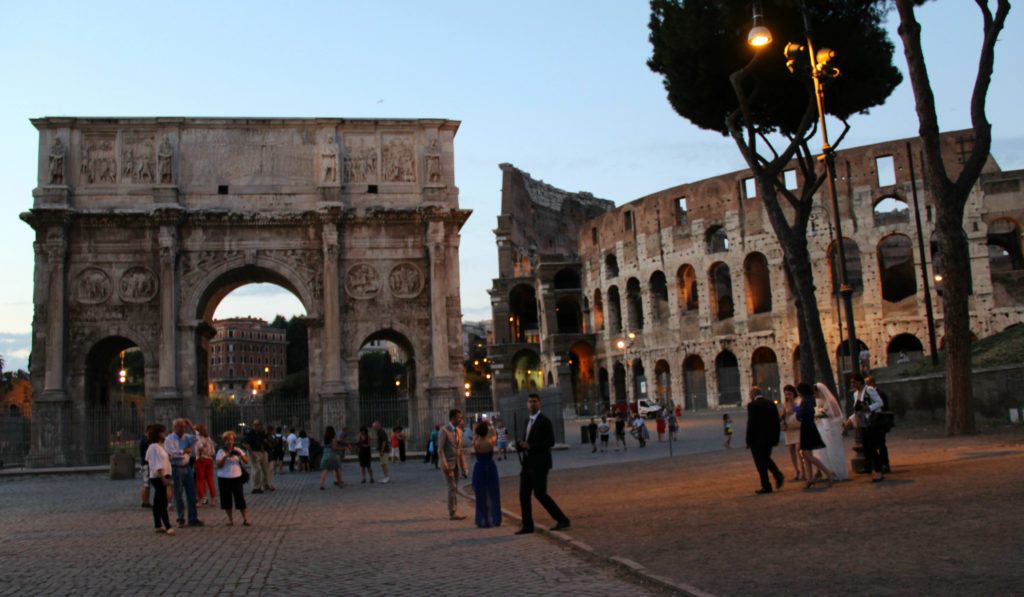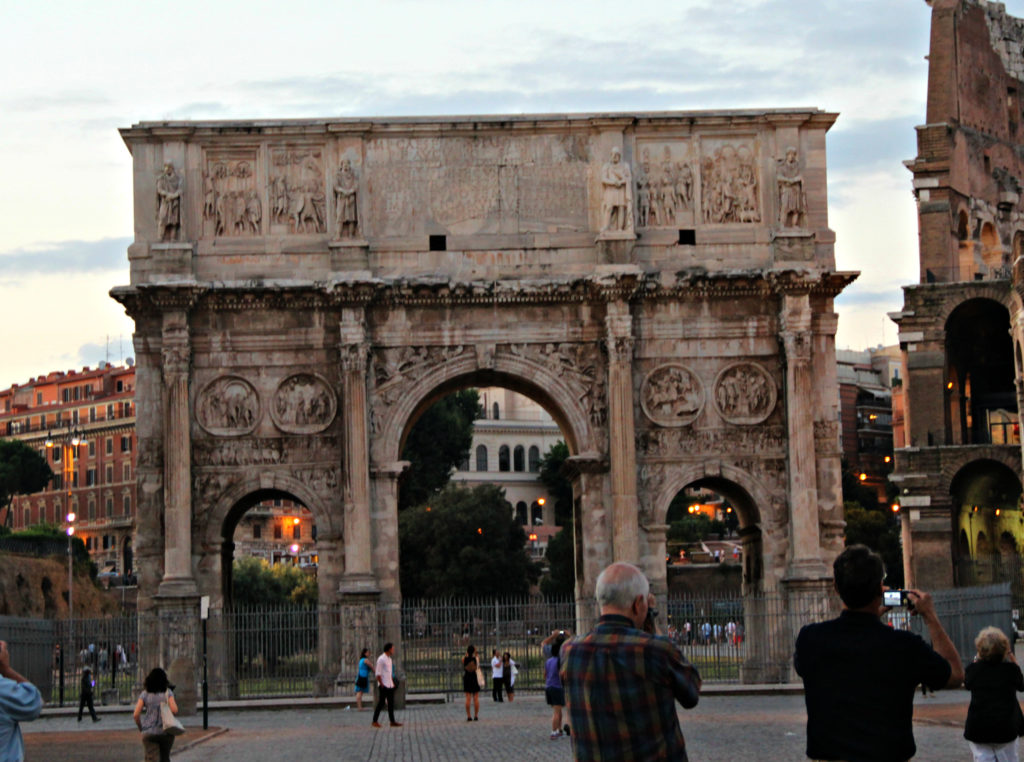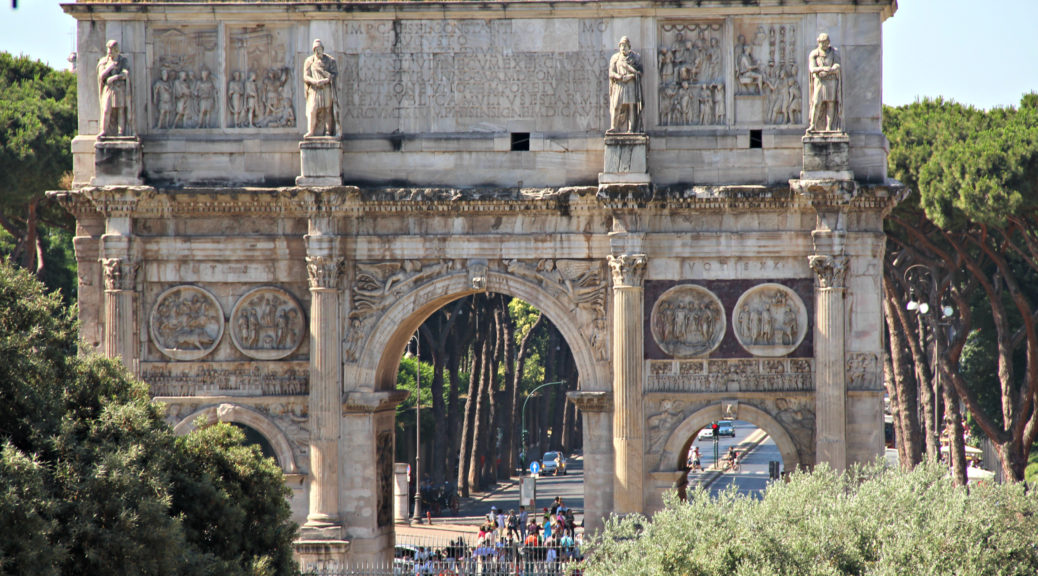
Rome (Part Two)
These are pictures of the Roman Forum. It is a rectangular plaza that is surrounded by the ruins of several ancient buildings. The Forum was a marketplace and civic center. Monuments honored great men of the time. The last picture with the three columns are all that remains from the Temple of Castor and Pollux. It was built in 6 AD, replacing an earlier temple. Castor and Pollux were the twin sons of Jupiter and said to have been instrumental in winning the Battle of Lake Regillus. There was a platform at the temple suggesting senators might have given speeches here. It is one of the most recognized landmarks of the Forum.
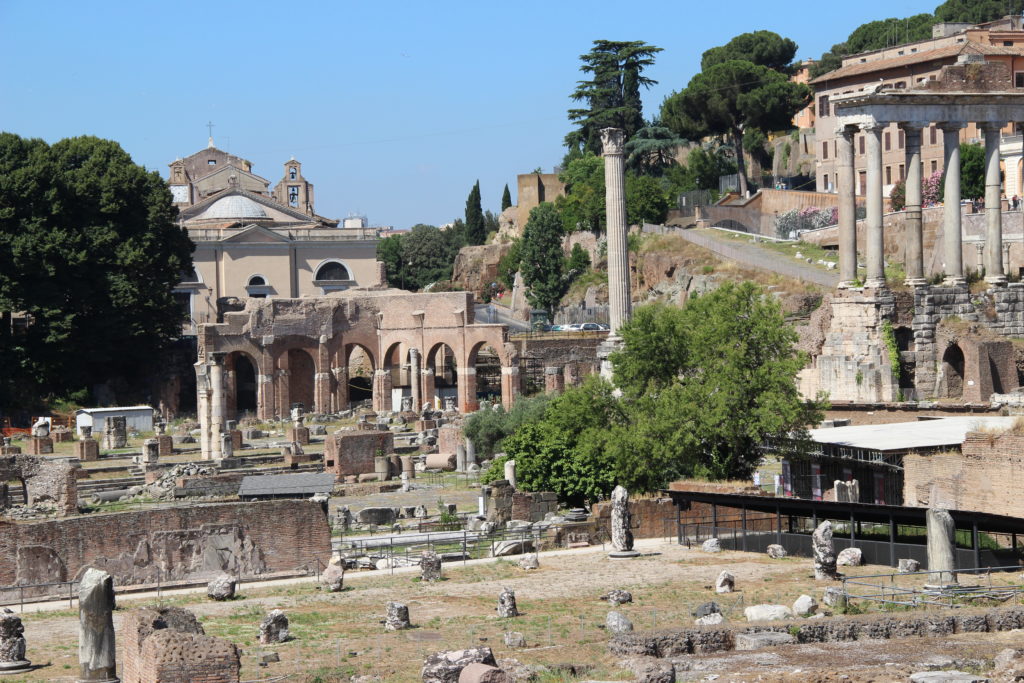

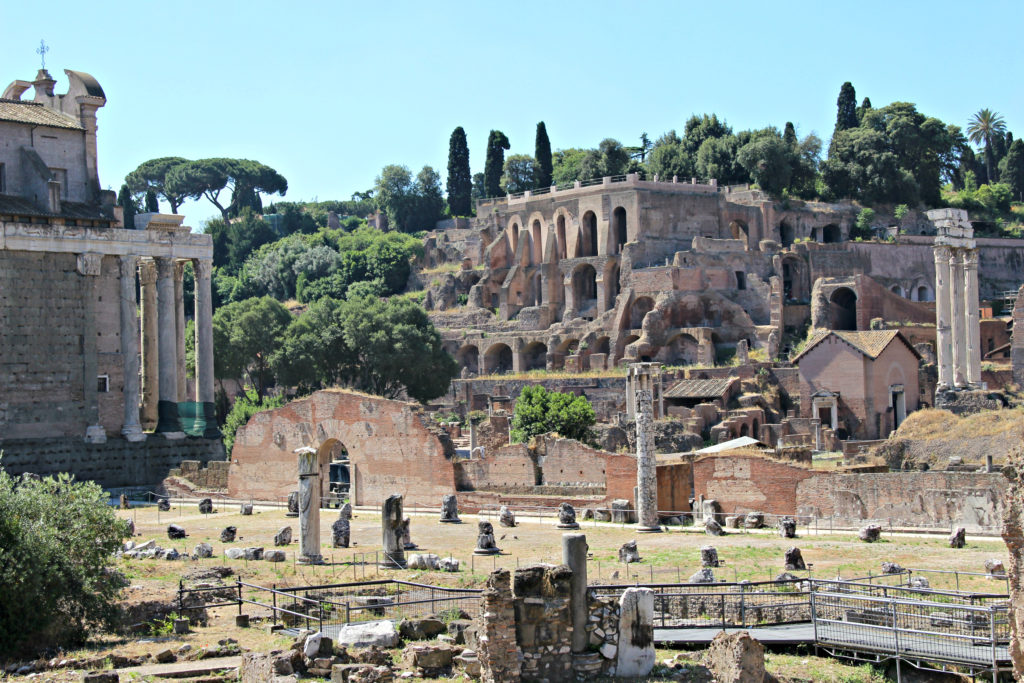
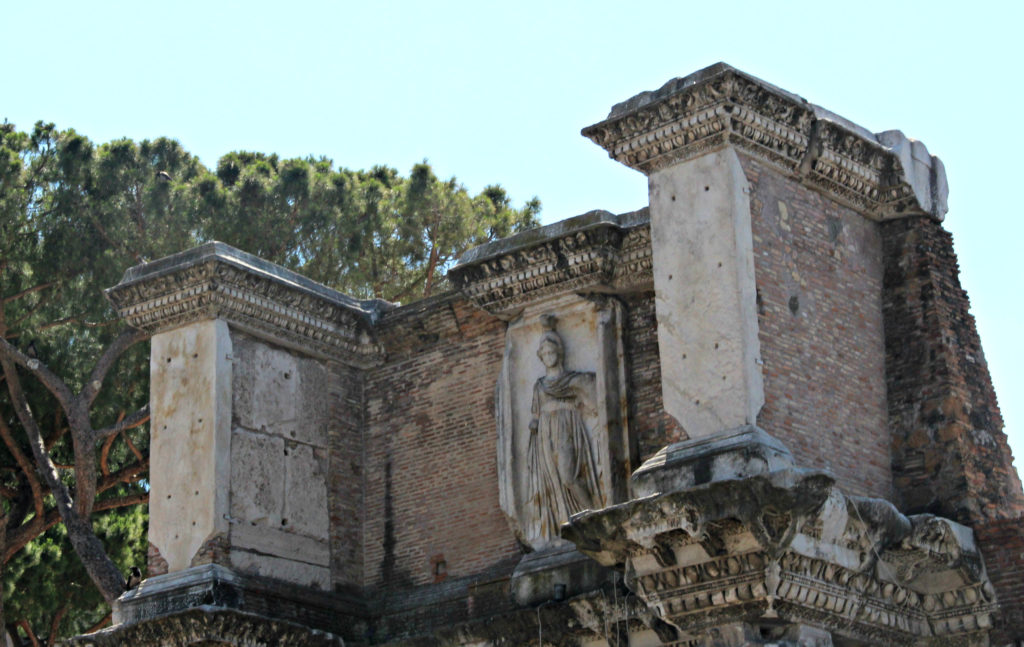
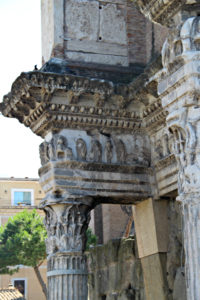
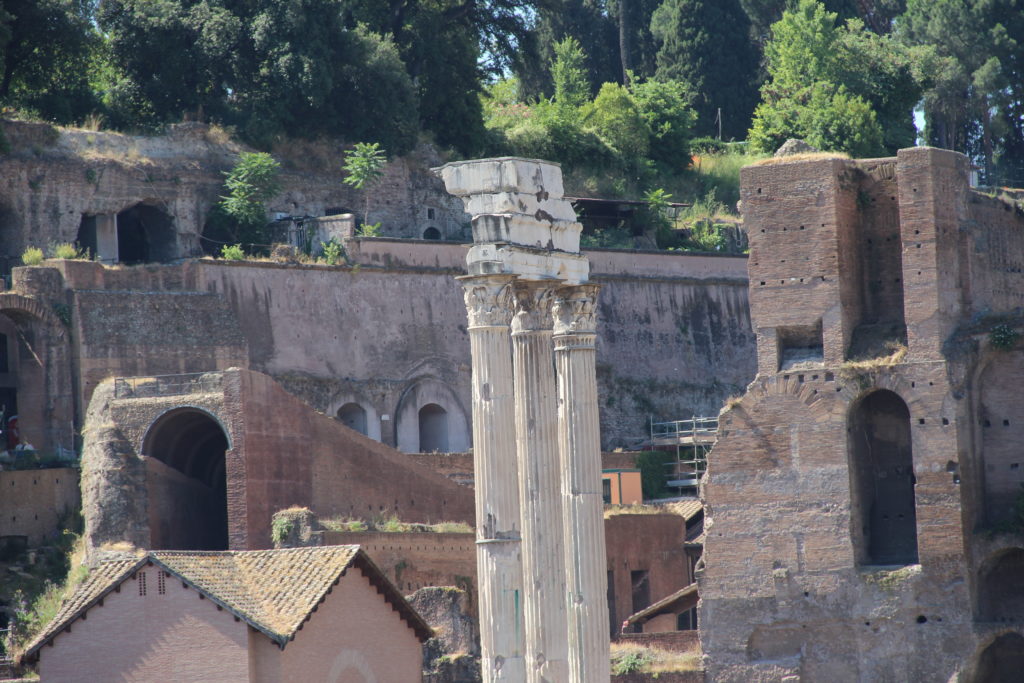
The Colosseum is just a short walk from the Roman Forum. The first picture below is another one of the Forum taken from the Colosseum. The Colosseum is an amphitheater built of concrete and stone. It is in partial ruin due to earthquakes and stone robbers. Construction began in 70 AD and was completed in 80 AD. The arena had a wooden floor covered with sand. While little of the wooden floor remains, much of the hypogeum, an underground structure of tunnels used for animals and slaves, can still be seen.
The Colosseum had an estimated capacity of 50,000 to 80,000. It was used for events such as gladiator contests, “hunting” animals, re-enactments of famous battles and executions of criminals and Christians. Structurally, it was very similar to today’s stadiums in that it had multiple entrances and staircases, each numbered so spectators could find their seats.
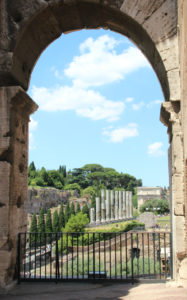
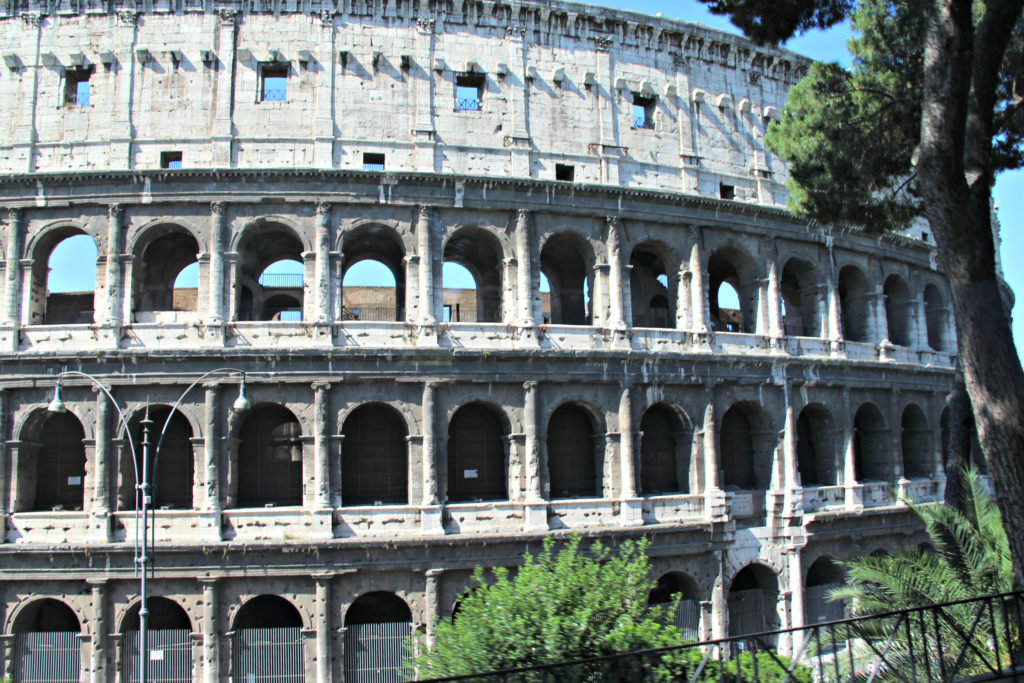
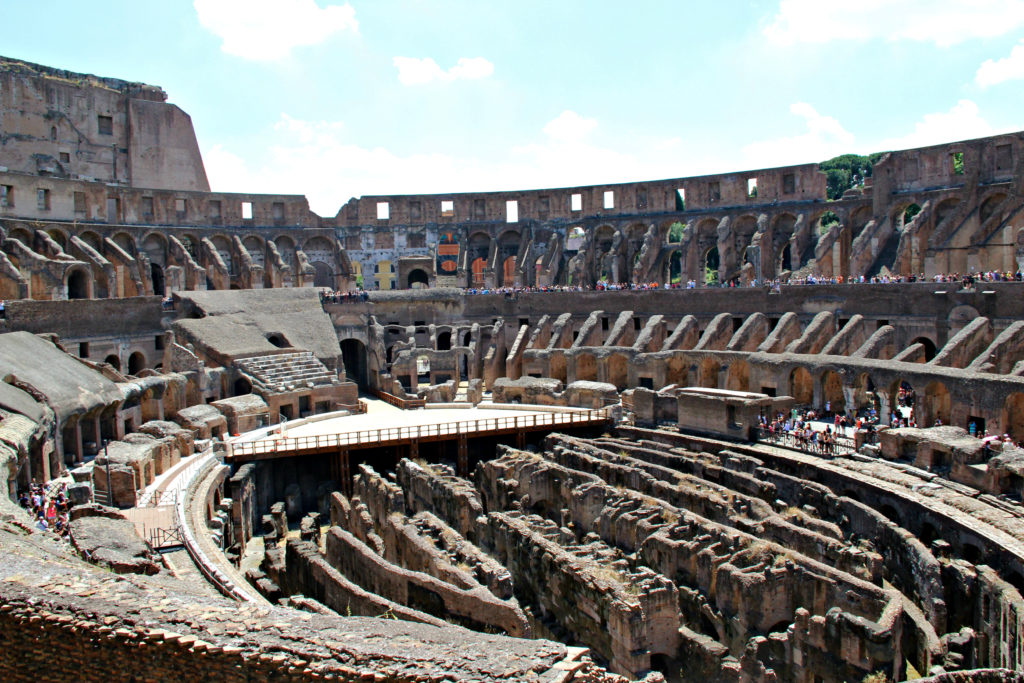
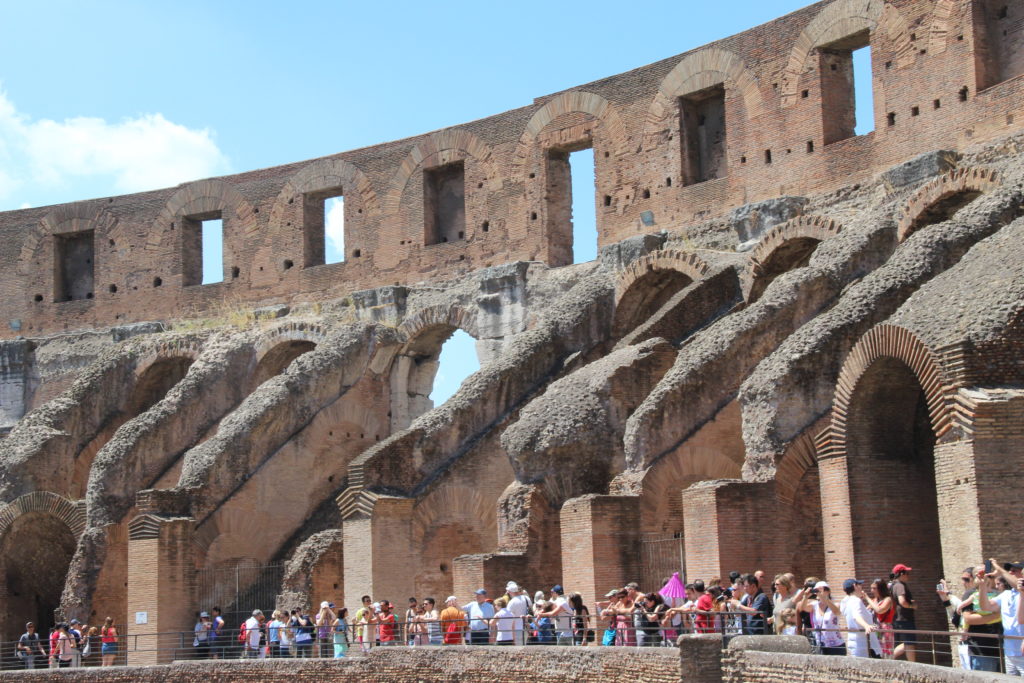

Arches on the second and third floors may have held statues honoring gods and other characters from mythology. Spectators were seated according to their status in society. Names of some senators can still be seen carved in stonework, probably signifying their reserved seat. Stone and marble seating was provided for citizens and nobles (third and fourth pictures). The last picture shows a cross which commemorates Christians who died in the arena. The cross marks the place where Roman emperors once sat.
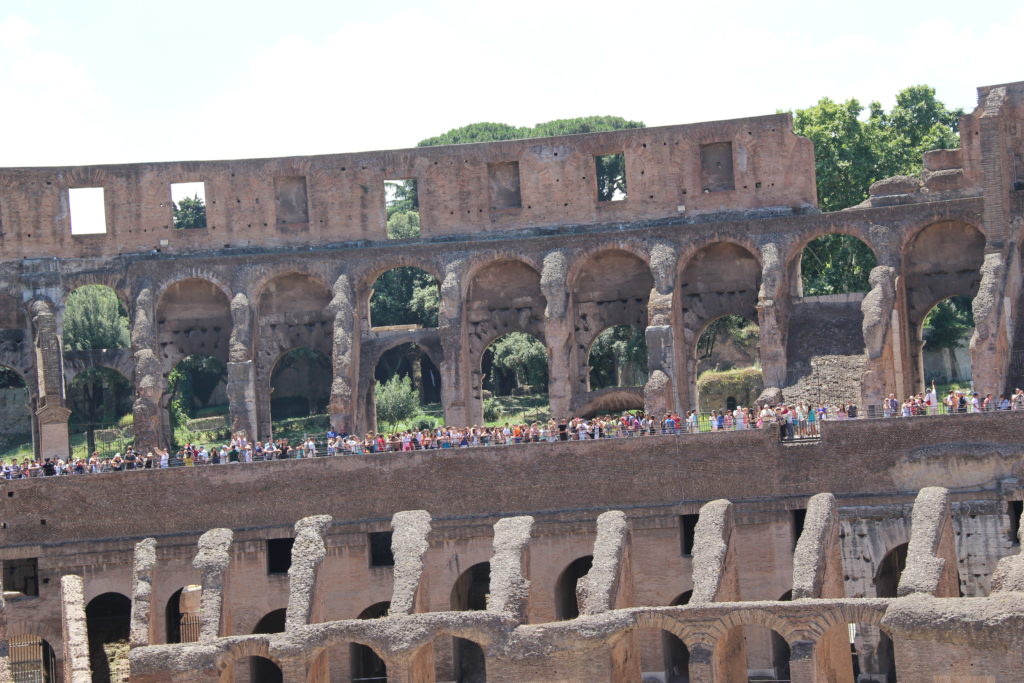



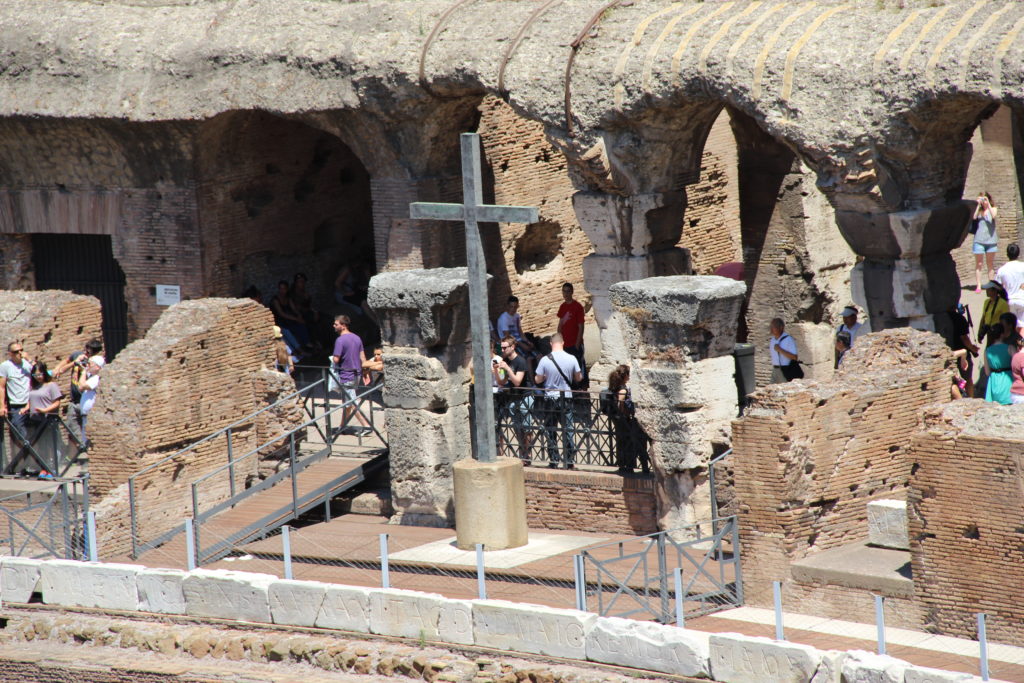
The next pictures are of the Arch of Constantine which is next to the Colosseum. It is a triumphal arch awarded to Constantine in 315 AD to honor his victory at the Battle of Milvian Bridge. Constantine believed his victory was enabled by the God worshiped by Christians. Under his reign, Christianity became the official religion of the Roman Empire.
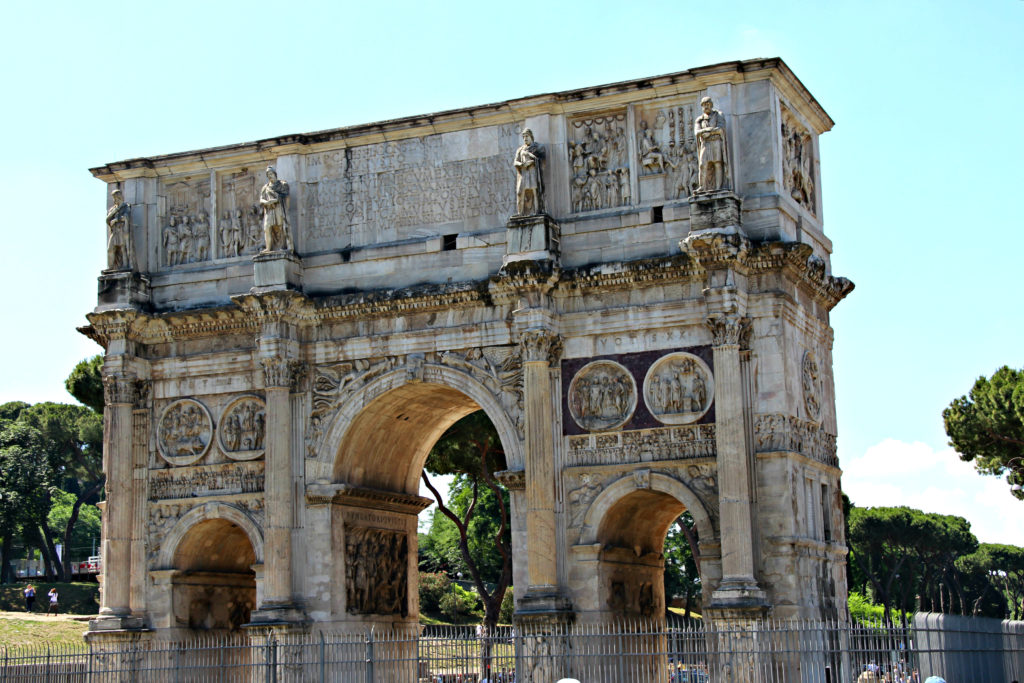
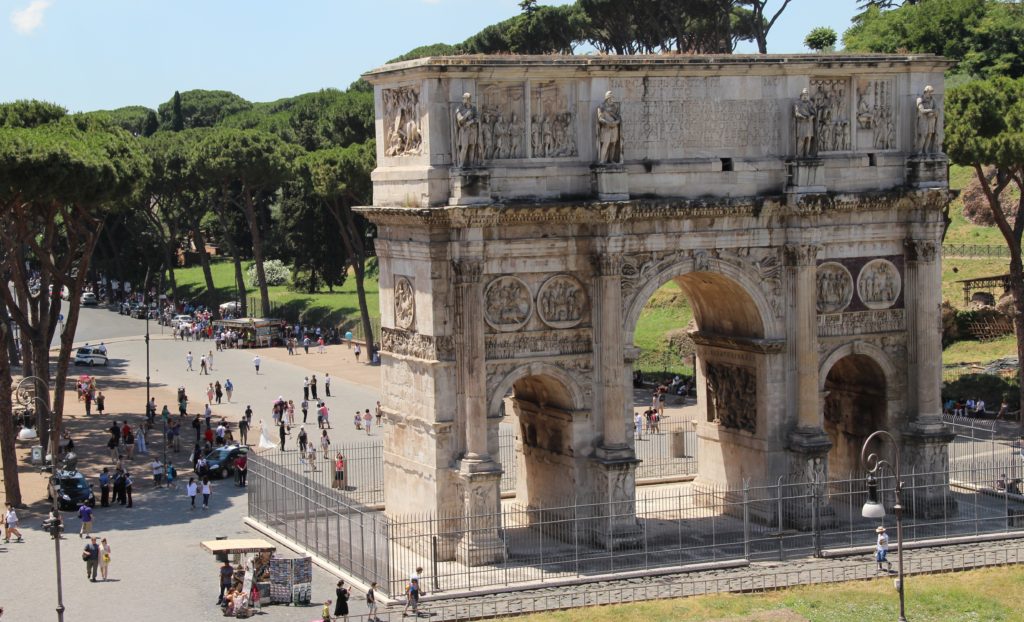
These pictures were taken of the Colosseum and Arch of Constantine in the evening.
